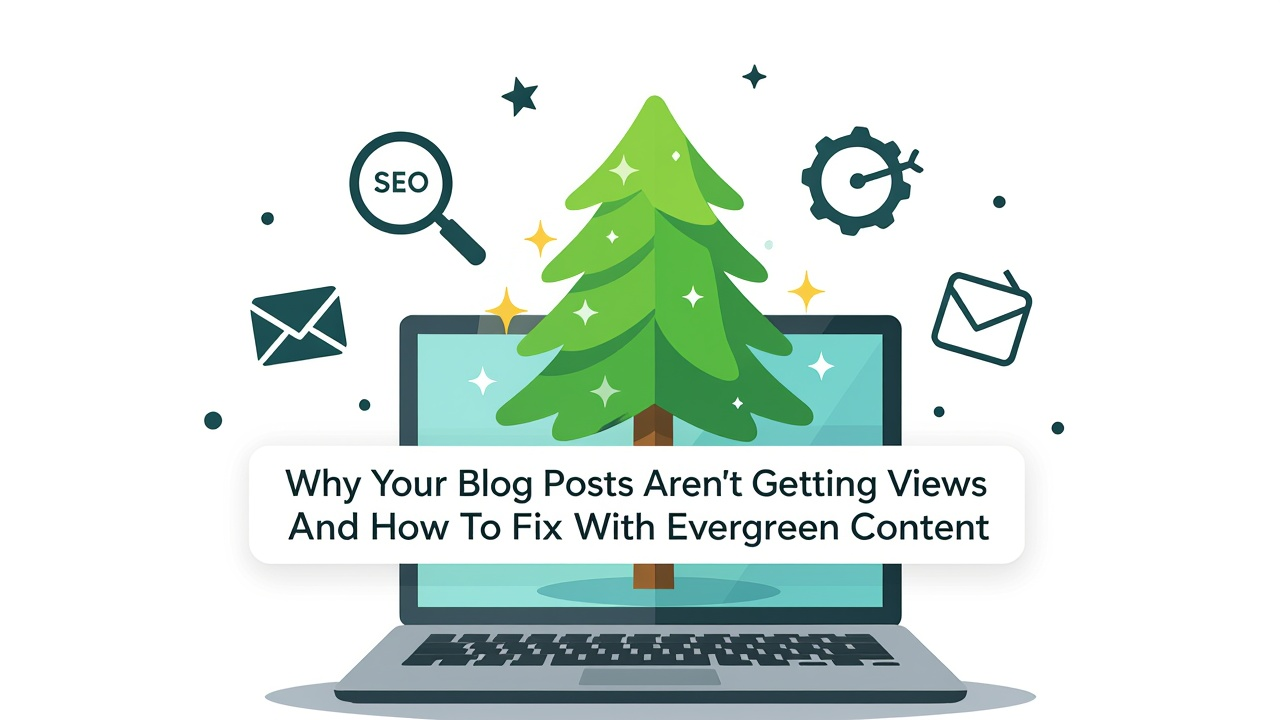I’ve been writing for four years now, but I never really got the kind of blog traffic I hoped for. It always felt like I was being left behind.
I started my blog in 2022, yet the awesome traffic I dreamed of never came. Deep down, I know it’s because I wasn’t putting enough effort into marketing.
But recently, while tracking my progress, I had an eye-opening realization. Most of my posts weren’t useful to my readers.
They were seasonal or personal—more like diary entries—rather than helpful guides. That’s when I realized the real issue: I wasn’t creating evergreen content. I was publishing short-lived posts that didn’t provide long-term value.

The Beginner’s Guide to Evergreen Content
Now that I’ve shifted my focus to evergreen content, I’ve started gaining a decent amount of traffic, especially considering that writing isn’t my full-time job.
What I Thought Evergreen Content Was (And Where I Got It Wrong)
I’d heard the term “evergreen content” before—after all, it’s been four years—but I misunderstood it.
I used to think evergreen content meant writing something helpful once and leaving it at that.
Recently, I learned that evergreen content is meant to remain relevant over time, but it still needs to be updated regularly to stay fresh and accurate.
Even SEMrush supports this: evergreen content should be maintained. One of my biggest mistakes was publishing helpful content and then forgetting about it. No updates, no edits—just hoping it would work forever.
How to Turn Your Posts Into Evergreen Content

If you’ve written many posts and still aren’t getting traffic, go back and review the ones with potential. Start editing them by:
- Researching the best keywords that fit the topic.
- Writing content that directly helps your audience.
- Updating with the latest statistics and supporting data.
When analyzing my posts, I focus on traffic and engagement. If a post is getting some views, I prioritize optimizing and promoting it.
After rewriting and optimizing posts like How to Apply SEO in Medium and MSI Thin GF63 Review, I saw major improvements. It showed me just how much untapped potential my old content had.
I was also inspired by The Side Blogger. I’m an avid reader of her blog, and I admire how her content stays fresh and conversational while being highly informative. That’s the approach I’m trying to follow.
4 Rules I Follow Before Publishing Anything
When I started learning about evergreen content, I created a checklist to guide me:
1. Pick Timeless Topics
It may sound cliché, but “how-to” blogs are still relevant—even in the age of AI. People still prefer personal experiences over generated content. Many top-ranking blogs on Google are “how-to” posts because they provide lasting value.
2. Avoid Trending Phrases in the Title
While trending topics may bring quick traffic, they usually don’t last. Think of a blog post about Nokia—it may have worked years ago, but not today. If your goal is evergreen content, it’s better to steer clear of fleeting trends.

This is an example of writing evergreen content, even though there are still people searching for it, it has a huge difference from before. As you can see, the traffic for the term “Nokia” was even spiking from 2008 to 2010 but suddenly decreased up until now.
3. Make It Detailed and Skimmable
Write comprehensive yet skimmable posts. While it’s great to cover a topic in-depth, some readers might only be looking for one specific section. Use a table of contents to help readers navigate your post easily.
4. Update It When Needed, But Write It to Last
Even if your post is backed by solid data, you must revisit and update it. For example, a post titled “How to Start SEO in 2020” could be outdated by 2025 due to Google algorithm changes. Keep your content up-to-date so it continues to rank and serve readers.
My Top 3 Evergreen Posts That Keep Getting Views

I’ve written many blog posts, but these three continue to bring in traffic:
- How to Apply SEO in Medium in 2025: After joining Medium and staying consistent, I gained 1.4k followers in just two months. This post, backed by evergreen principles, still brings me traffic and earnings—even during periods when I’m not actively writing.
- RealFit F3 Review: Is it the Best Student-Friendly Earphones?: I initially wrote this as a simple product review, but it kept getting traffic. I later updated it with more detailed insights and data to serve readers better.
- MSI Thin GF63 Honest Review (2025): My Experience After 1 Year: At first, this post didn’t get much attention. But after I optimized and rewrote it, traffic started to grow. Now, I make sure to update it regularly.
I used to think that writing more posts would lead to more views. But in reality, editing and optimizing existing content can be more powerful.
Create Content That Works for You (and Your Readers)
Blogging isn’t a race to go viral—it’s about creating valuable, lasting content. I was focused on quantity, not quality, which held me back.
Now, I’ve decided to separate my content:
- All evergreen and informative posts go on my main website.
- Personal updates and documentation go to Medium and Hive.
This way, I can focus on building strong evergreen content that outperforms a dozen quick posts. Not only does it drive traffic, but it can also attract backlinks and improve domain authority.
In the end, evergreen content is more than just a blogging strategy—it’s a long-term investment that benefits both you and your readers.
Discover more from Mark Laurence
Subscribe to get the latest posts sent to your email.
